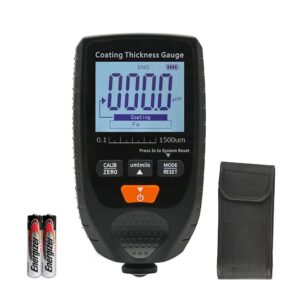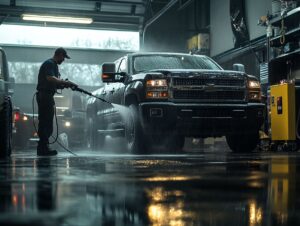
As an Amazon Associate, AutoPros earns commissions from qualifying purchases made through links in this post.
How often can you machine polish a car? This is one of the most common questions amongst car enthusiasts who are new to detailing. There isn’t a simple answer to the question, as much as we’d love to throw a number like 55 out there – we can’t do that.
It depends on how thick your paint is, and what kind of abrasive you’re going to use. How much clear coat do you have left? How far are you willing to go in order to get rid of that deep scratch? In the beginning, you aren’t going to know the answer to these things and it’s a good idea to do the best you can without doing too much.
Do you have a clear coat to polish? Are you polishing a vehicle with a single-stage paint job? These are all things you’ll need to consider when determining how often you can polish a car.
The History of the Car
If you’ve had the car since it was new and know the entire history of it, then you can better determine the answer. Have you ever had it machine polished in the past? Every time you buff or polish the car you’re taking off a tiny layer of clear coat. Some compounds and polishes are more aggressive than others, so always pay attention to the products you’re using and have used in the past.
Let’s say you’ve owned the car for 10 years and never once had it buffed or polished. It has a ton of swirls, minor scratches, yet still looks okay when it’s had a good wash. It’s probably safe to use a compound like Meguiars Ultimate Compound with a dual-action polisher if you want to really work out the swirls and scratches.
However, once you do that, it would be wise to polish and then apply a sealant and maintain that so you won’t need to use compound again in the near future. The last thing you want to do is shorten the life of your vehicle’s paint.
Rotary Buffer vs Dual-Action Polisher
There’s a big difference between using a dual-action (DA) polisher over a rotary buffer, so it’s definitely worth the investment to buy a DA polisher before going through with this job. A DA polisher is much safer and beginner-friendly. It will allow you to get rid of swirls without taking off too much paint, whereas a rotary buffer is less forgiving and can take off too much paint if you don’t know what you’re doing. This is why even the most experienced auto detailers use a DA polisher these days, and rotary buffers are more commonly used in body shops. We wrote about the best dual action polishers under $100, check it out if you want to learn more about them.
The Product Used Will Also Determine How Often You Can Machine Polish Your Vehicle
So let’s get back to the product – as some polish products are less abrasive and can be used more often than others.
Meguiar’s M205 Mirror Glaze Ultra Finishing Polish is a product you can use more often than others. It is a finer cutting material and won’t take off as much paint as a more abrasive one.
In comparison, Meguiars M105 Ultra-Cut has a great deal of cutting power and will eat through your paint quicker. If you’ve never polished your paint before and it has a lot of scratches, old clear coat, etc. then M105 Ultra-Cut is safe to use. Once you’ve polished the paint, however, you probably want to go to a finer second stage polish like M205.
Paint Thickness Gauge: The ONLY Way to Actually Know How Often You Can Machine Polish Your Paint
The only way to safely machine polish your vehicle is to use a paint thickness gauge, which will tell you how much paint you have to work with.
The truth is we can’t tell you how many times you can use cutting and polishing products to polish your car’s paint. Sure, using certain products and polishing by hand might mean you can ultimately polish the vehicle more, but even then, you don’t know how much paint is actually left and how much paint you actually burn through when doing a thorough machine polish.
These devices will tell you exactly how thick the paint is, especially since some vehicles have had hoods and bumpers painted by body shops after accidents, and the paint thickness can vary throughout the vehicle.
If the paint is thick enough, then you can use a more abrasive compound or polish to get rid of scratches. If it’s thin, you can consider using an all-in-one wax to get the best result possible. If doing this job for a customer, make sure to be honest with them about expectations.
Here are some paint thickness gauges that are known to work well with accurate readings, as well as a video on how to use one…
The AutoPros.online team is dedicated to bringing you high quality automotive content for professionals and car enthusiasts, with topics like auto detailing, performance modifiations, repairs and automotive news.




